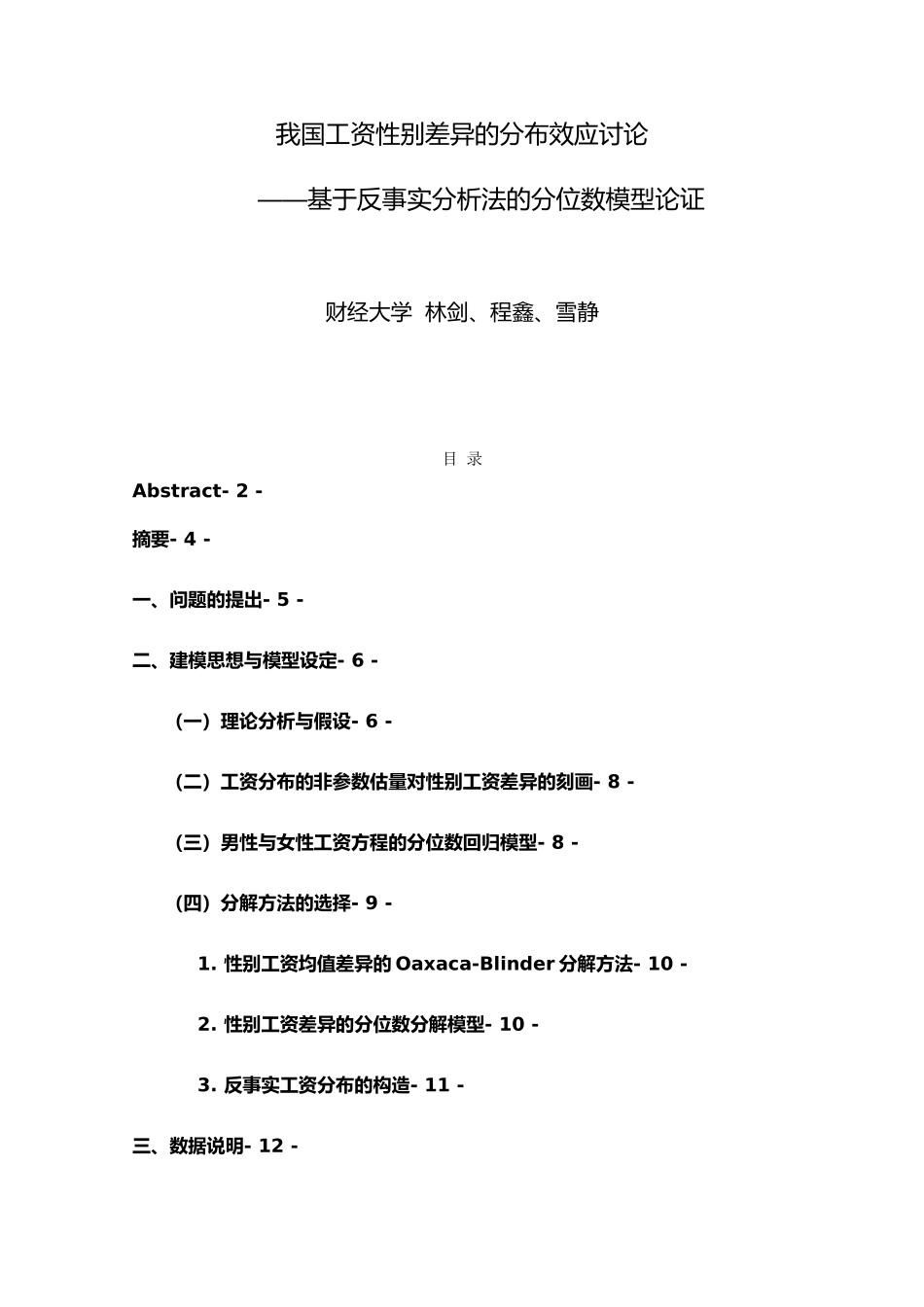我国工资性别差异的分布效应讨论――基于反事实分析法的分位数模型论证财经大学 林剑、程鑫、雪静目 录Abstract- 2 -摘要- 4 -一、问题的提出- 5 -二、建模思想与模型设定- 6 -(一)理论分析与假设- 6 -(二)工资分布的非参数估量对性别工资差异的刻画- 8 -(三)男性与女性工资方程的分位数回归模型- 8 -(四)分解方法的选择- 9 -1. 性别工资均值差异的 Oaxaca-Blinder 分解方法- 10 -2. 性别工资差异的分位数分解模型- 10 -3. 反事实工资分布的构造- 11 -三、数据说明- 12 -四、初步的描述统计分析- 13 -(一)男性与女性平均工资的差异- 13 -(二)“天花板效应”和“地板效应”的初判- 14 -五、男性和女性工资方程的分位数回归系数差异分析- 15 -六、性别工资差异的分位数分解结果分析- 18 -七、结论与建议- 20 -附录- 22 -参考文献- 23 -AbstractUsing CHNS(2024) data, we firstly apply nonparametric estimation methods to observe the overall gender differential situation in China and to get an initial understanding whether there exists the glass ceiling effect or the sticky floor effects in China by plotting the gender wage gaps in the different income groups. Then we use quantile regression method to analyze coefficients differential of the influential factors in the male and female wage equations. By the establishment of quantile decomposition model based on counterfactual distribution we empirical the glass ceiling effects or the sticky floor effects from the point of distinction between urban and rural in our country. The results show that there is a stick floor effect in the urban of our country, while a strong glass ceiling effect exists in the rural of our country. The results also reveal that a lion share of the wage differential between female and male is attributable to discrimination rather than to the human capital difference between the two sexes. Comparing the productivity features return leve...


